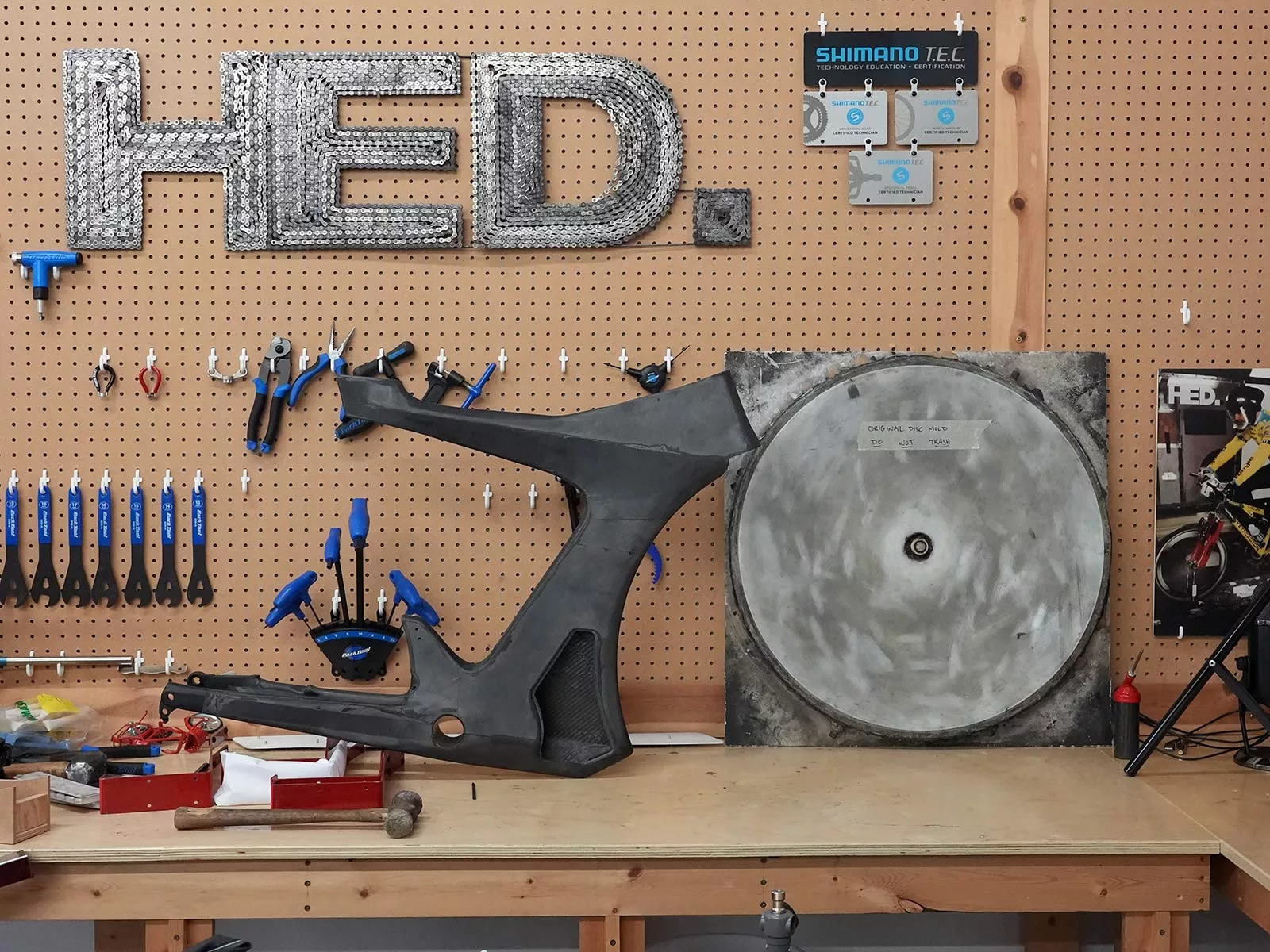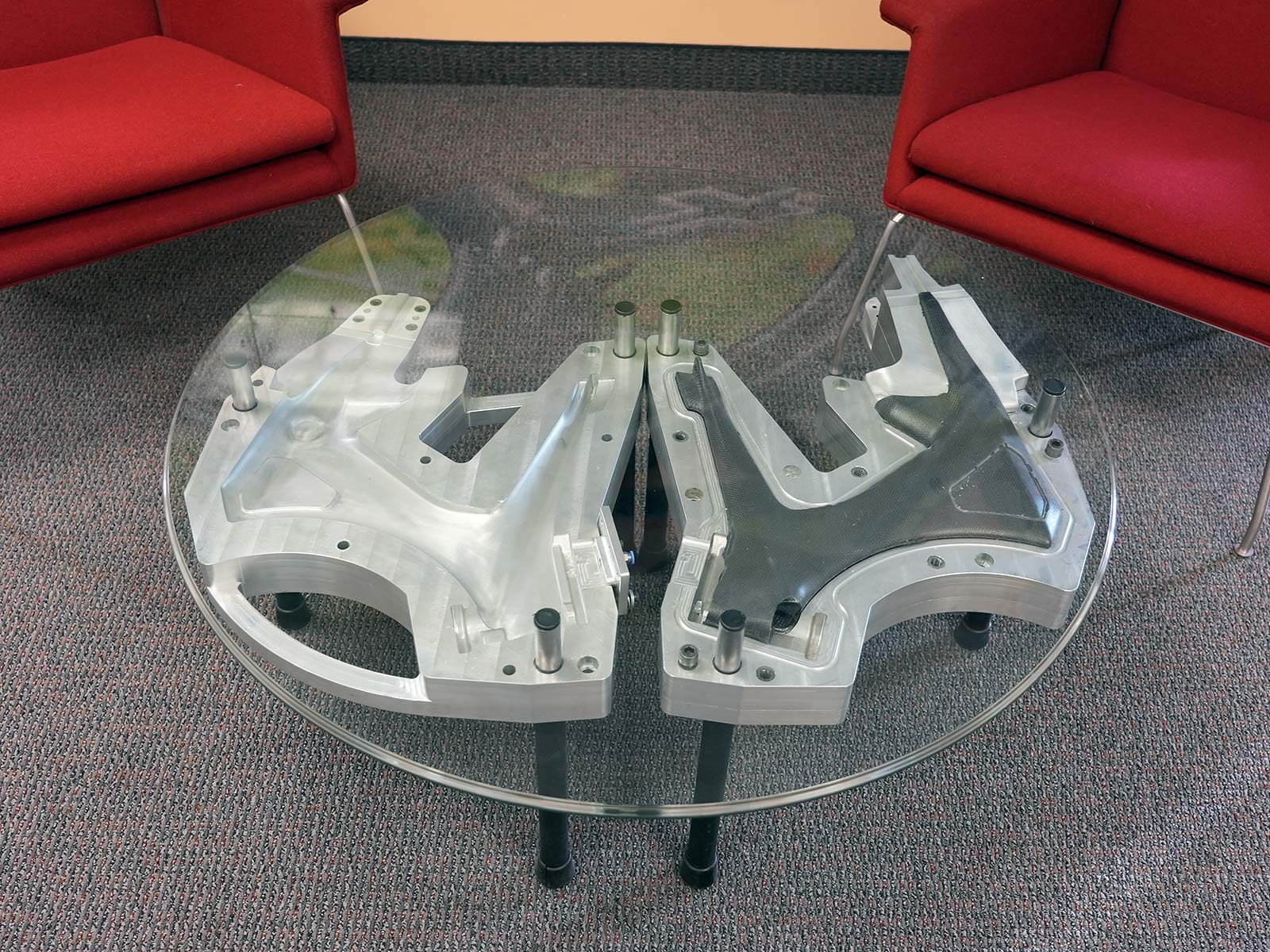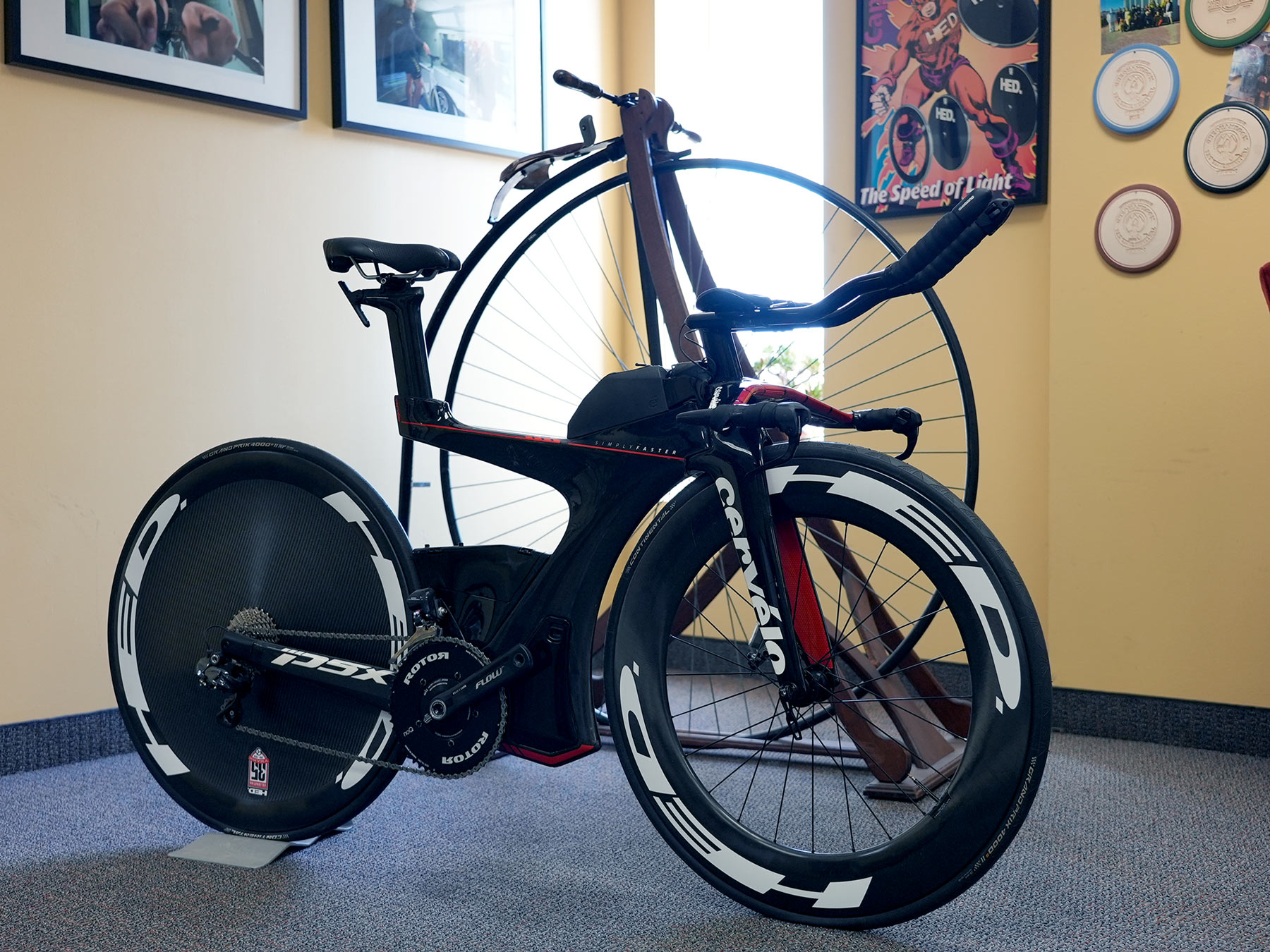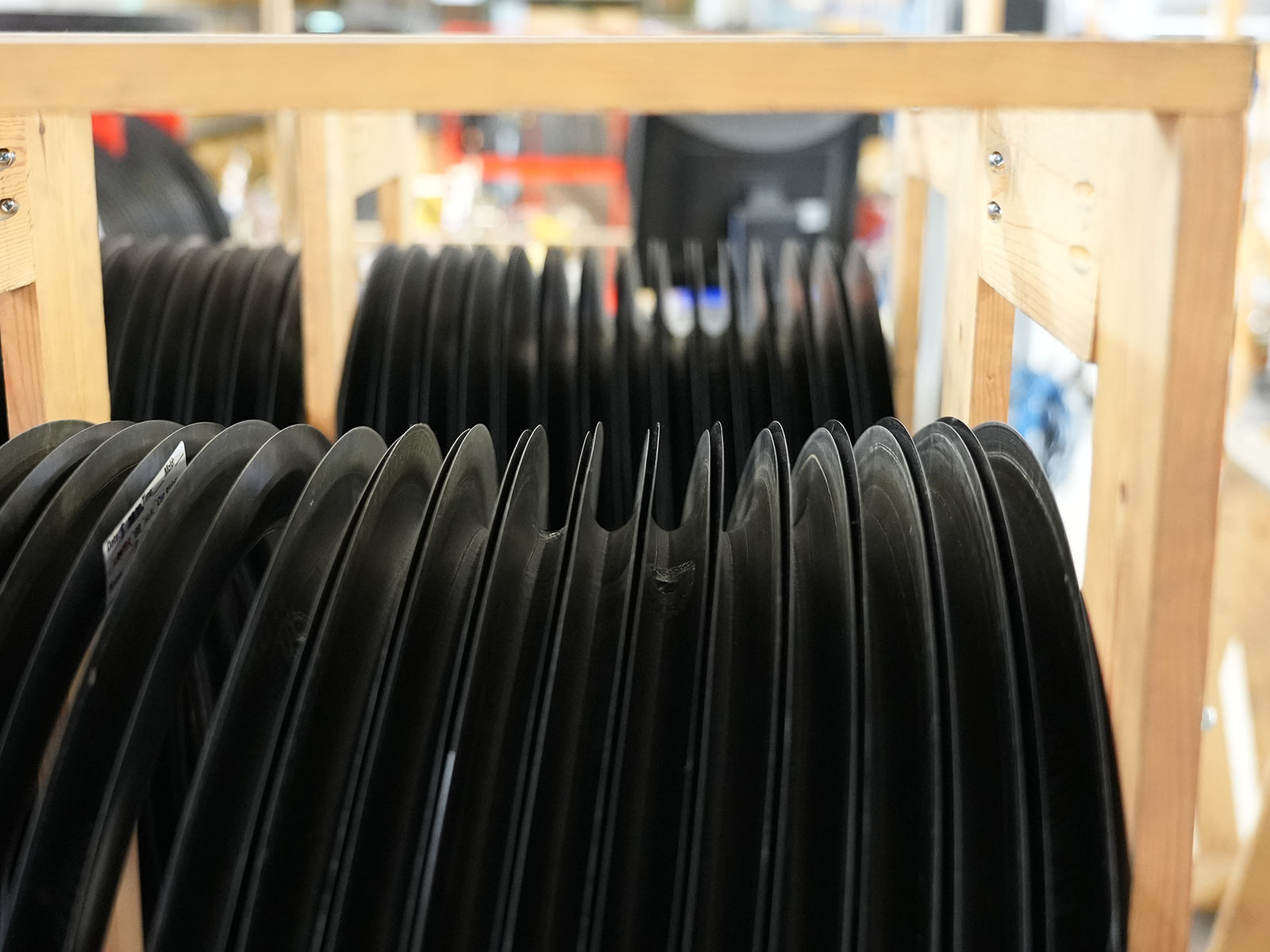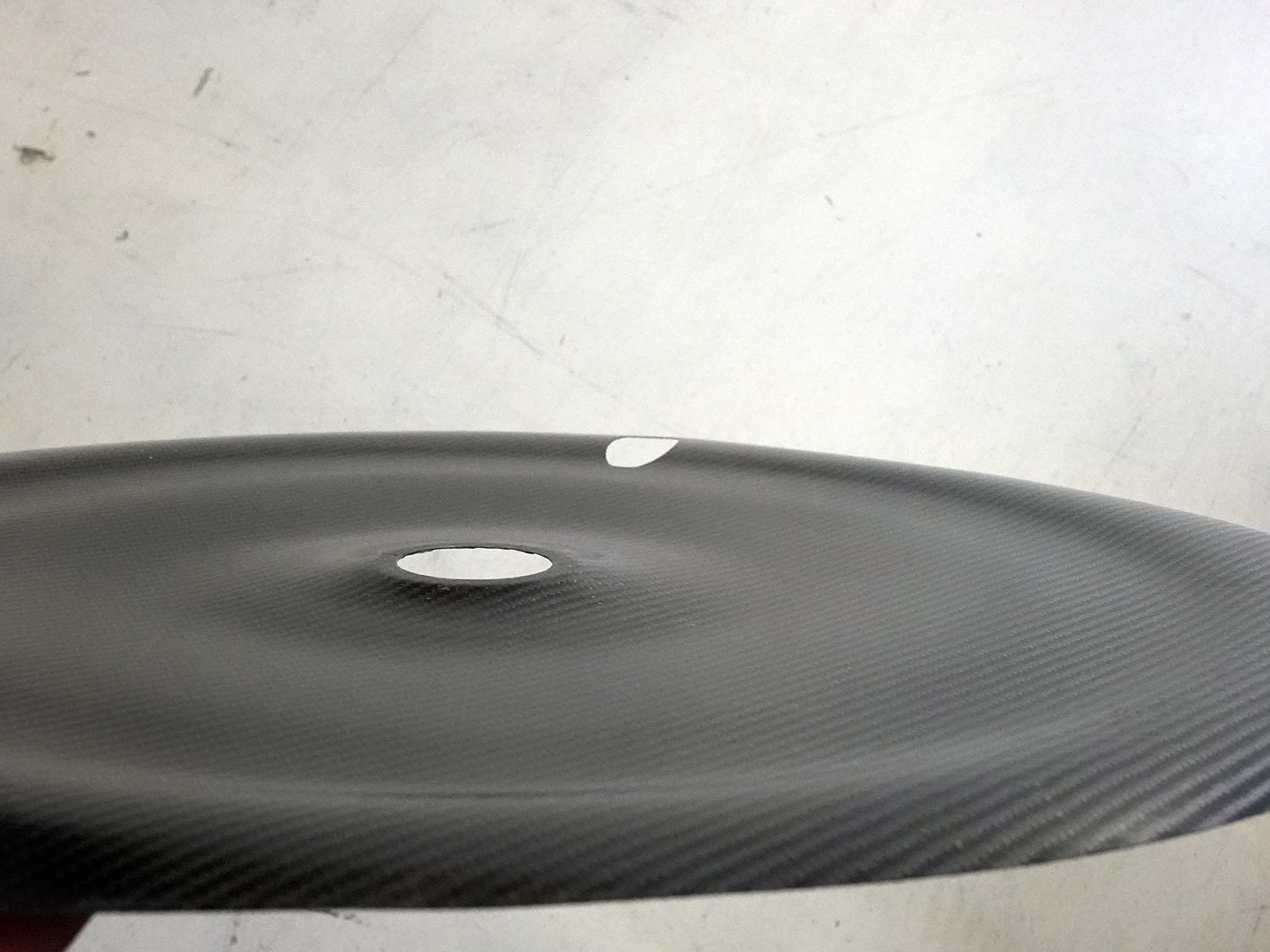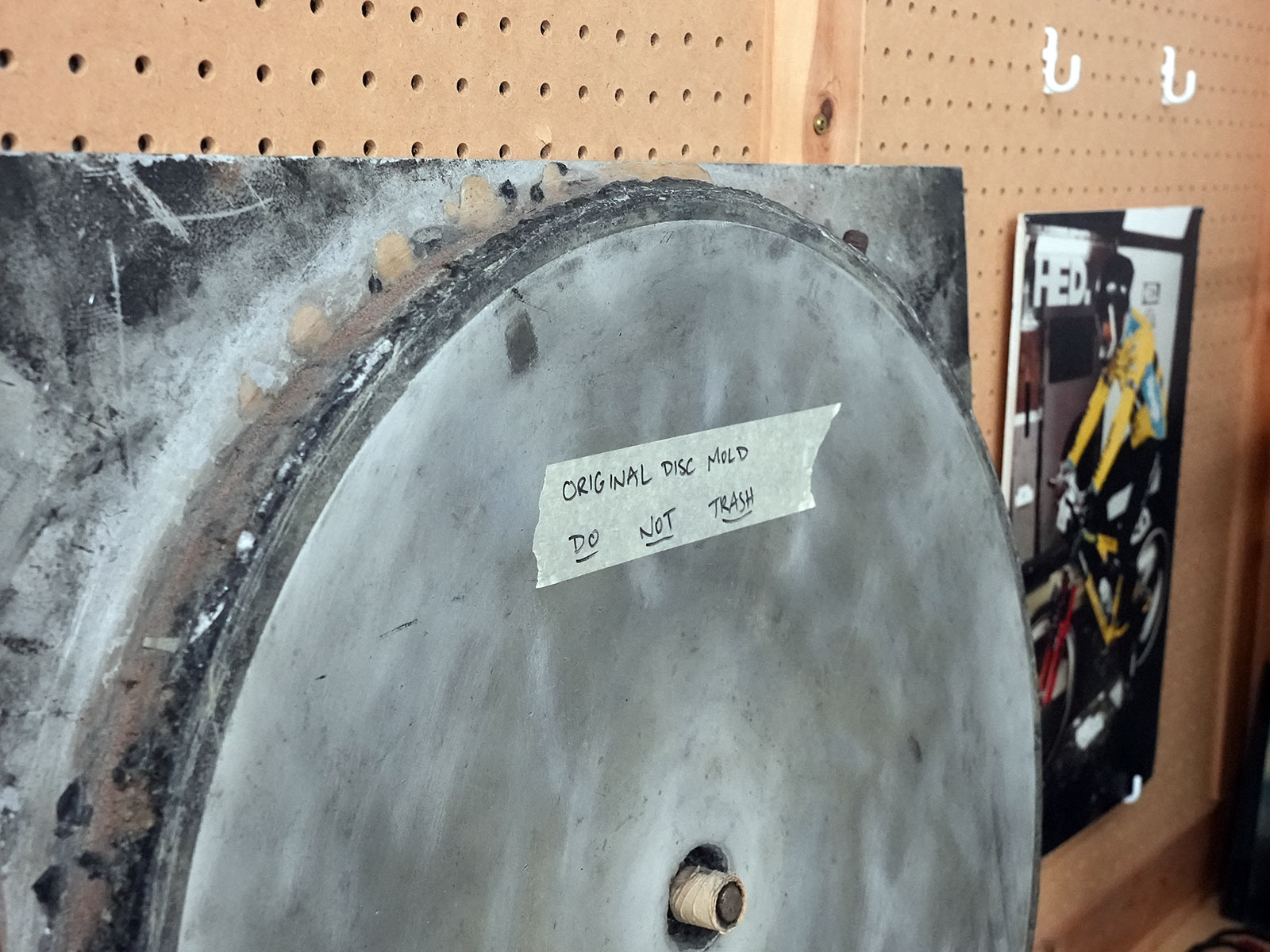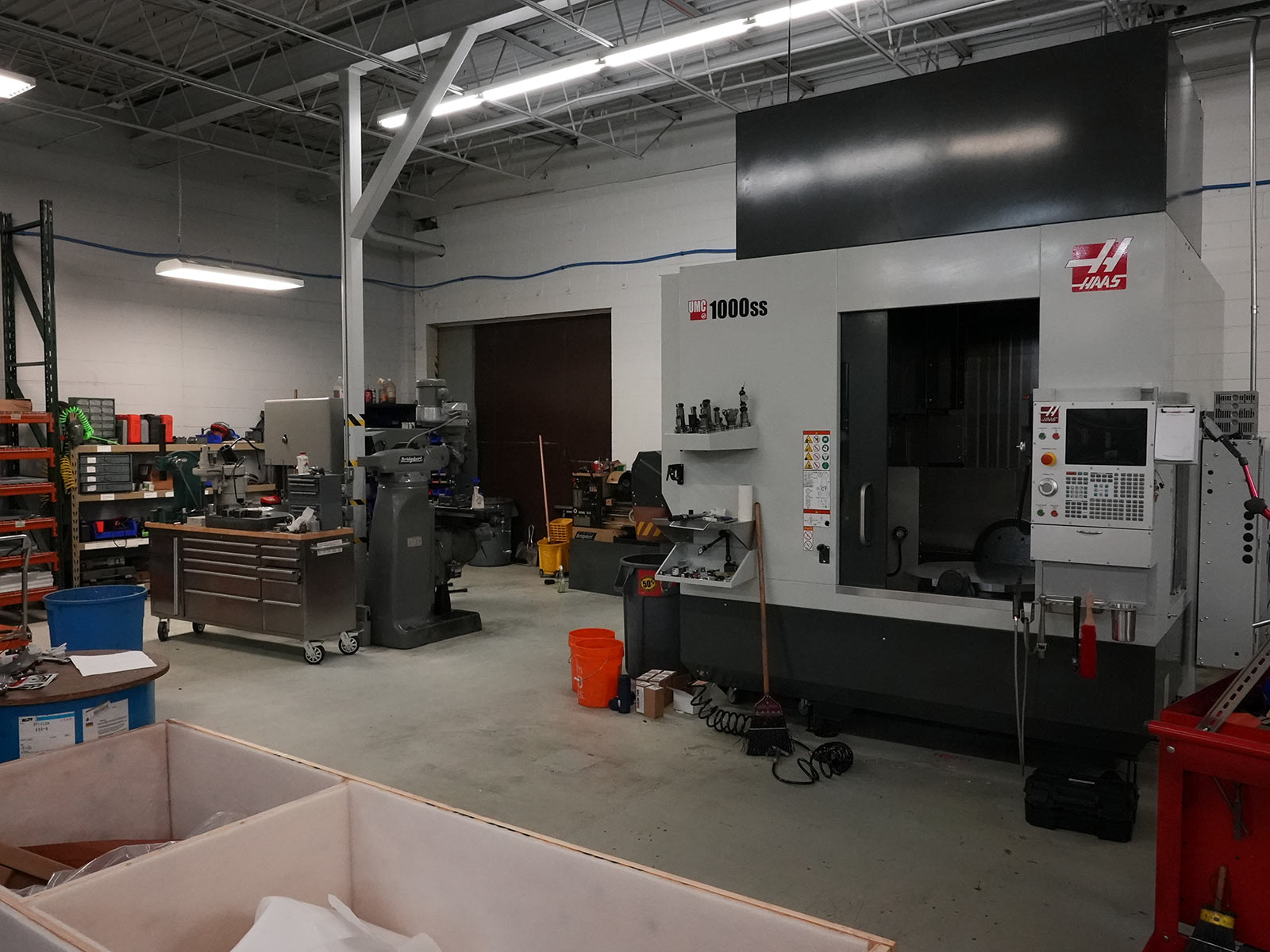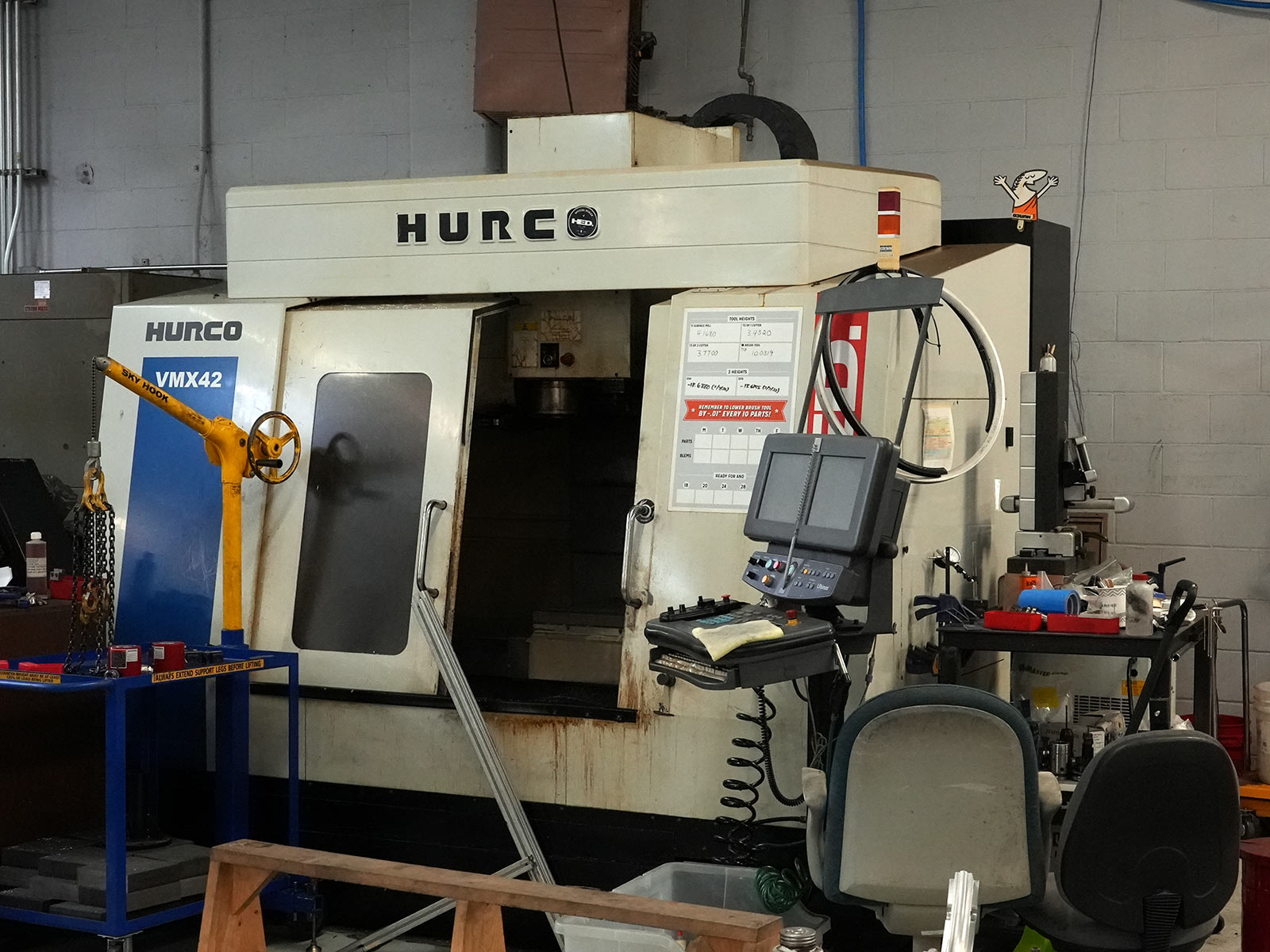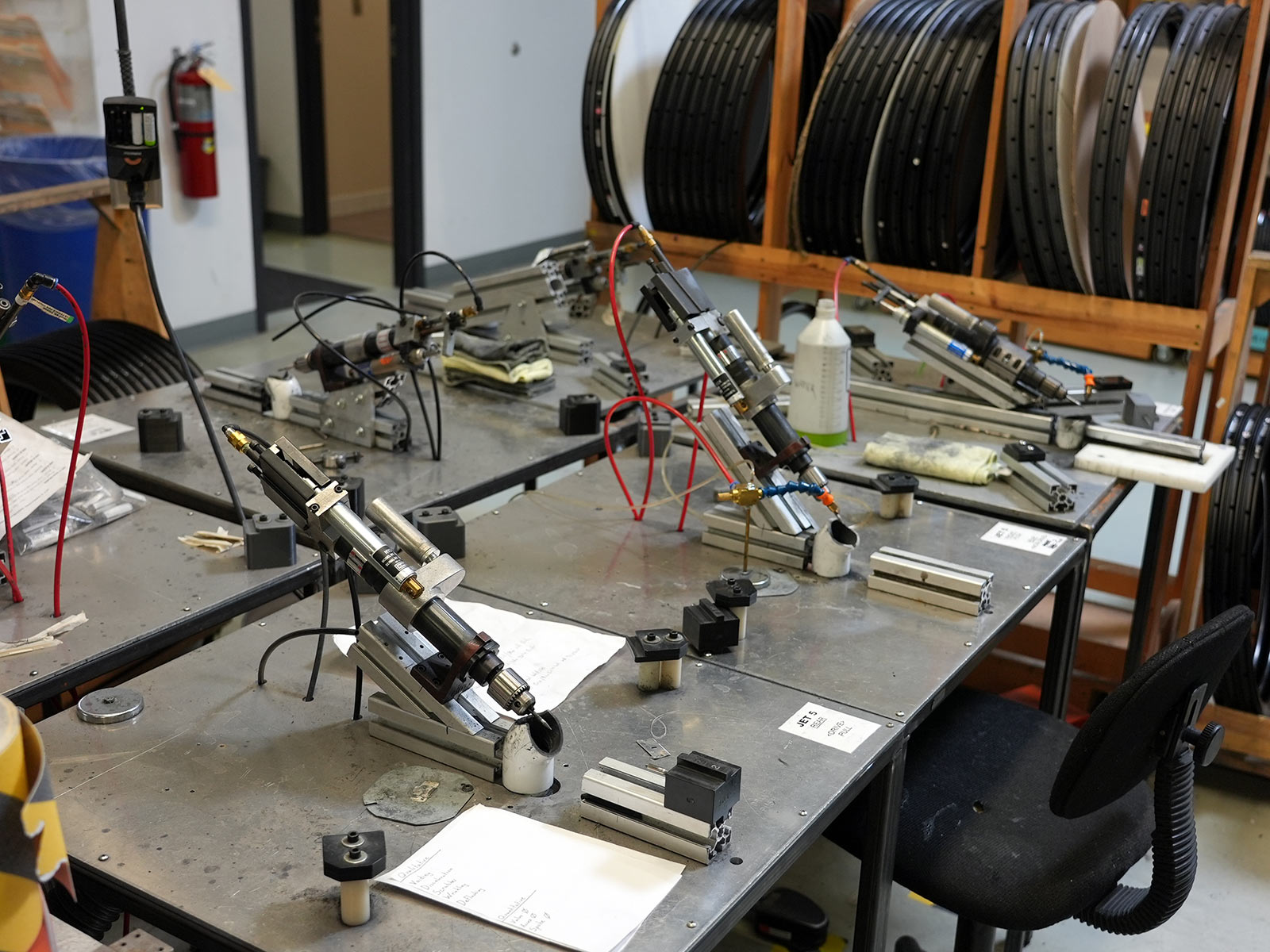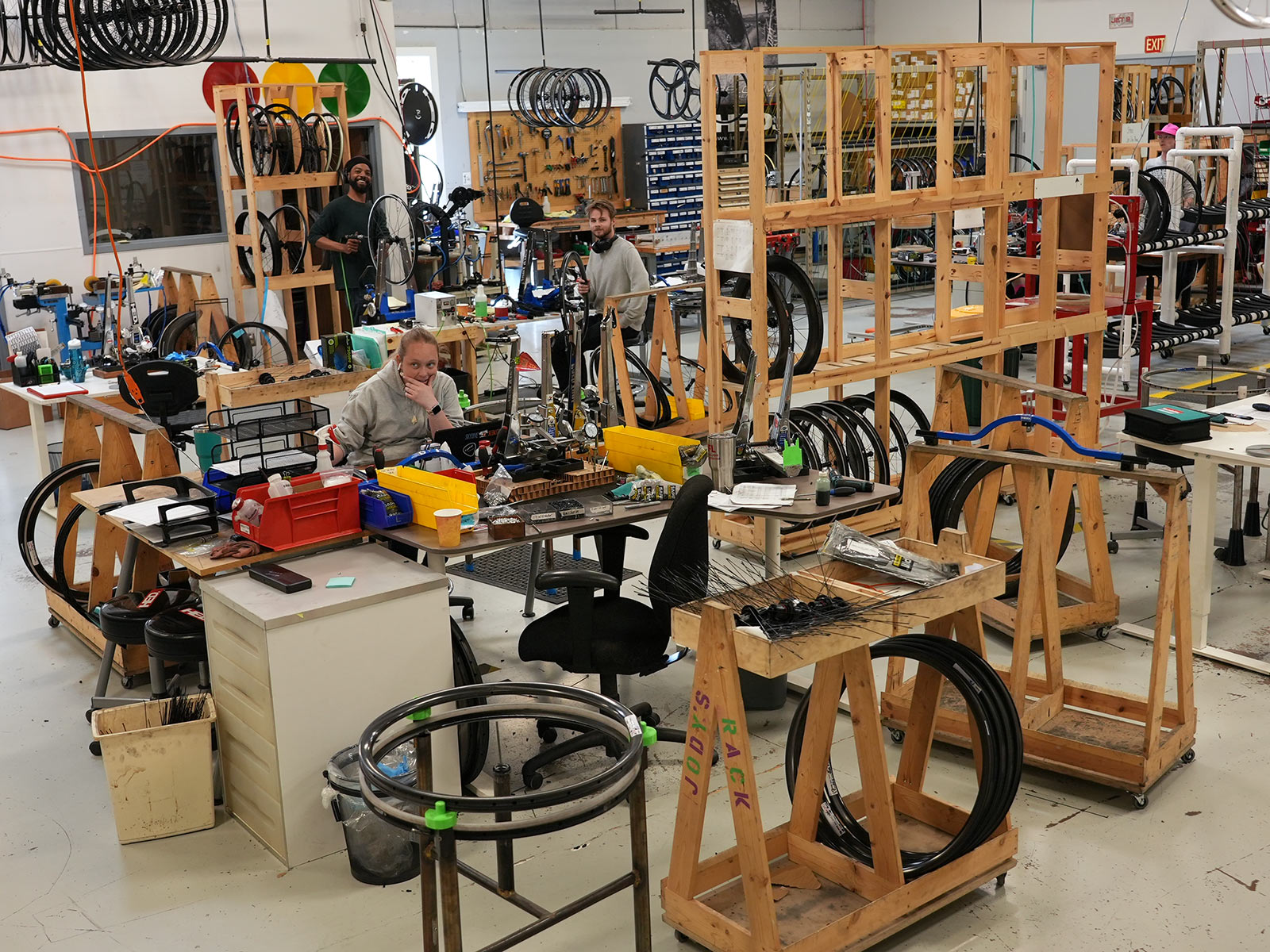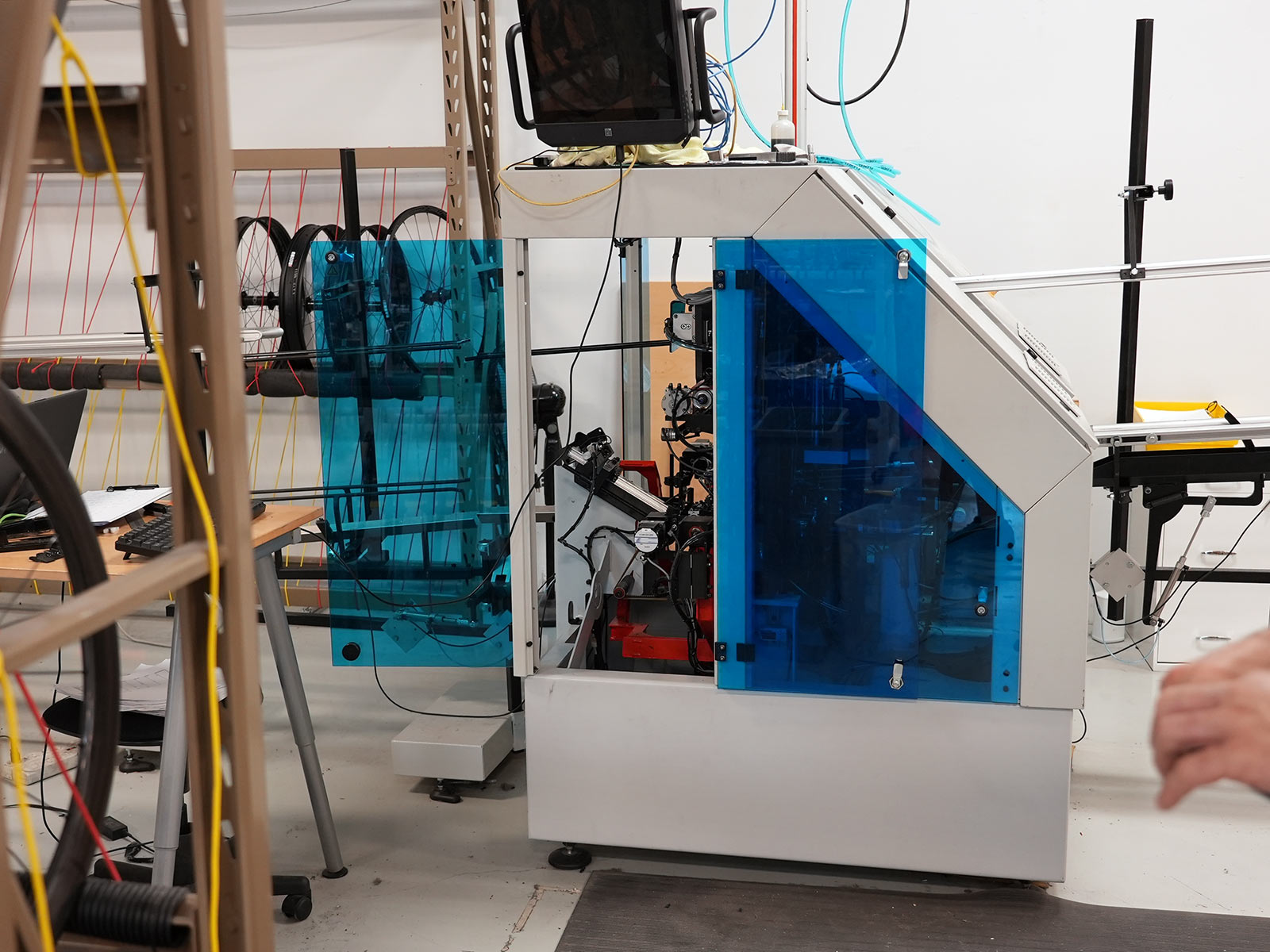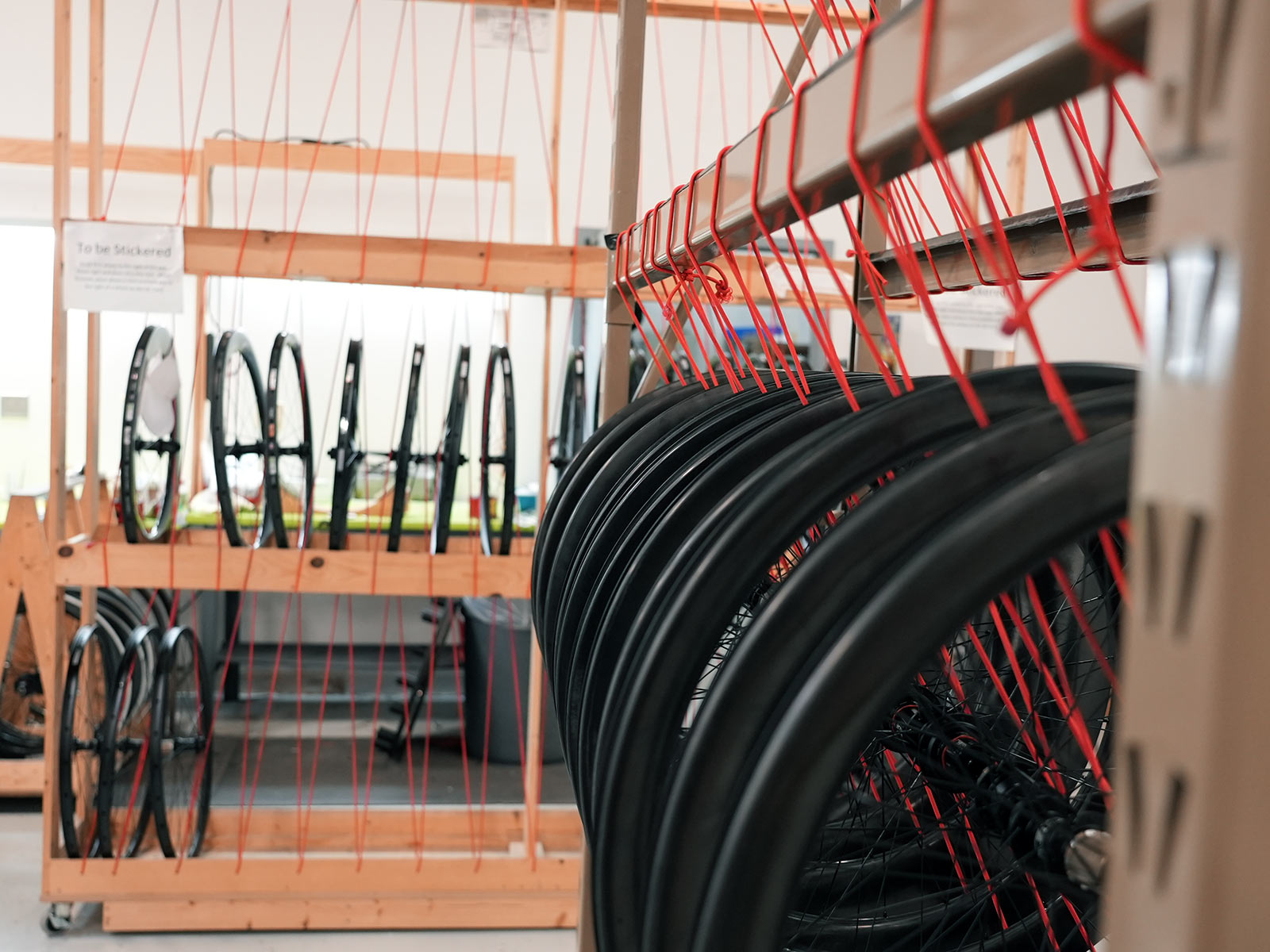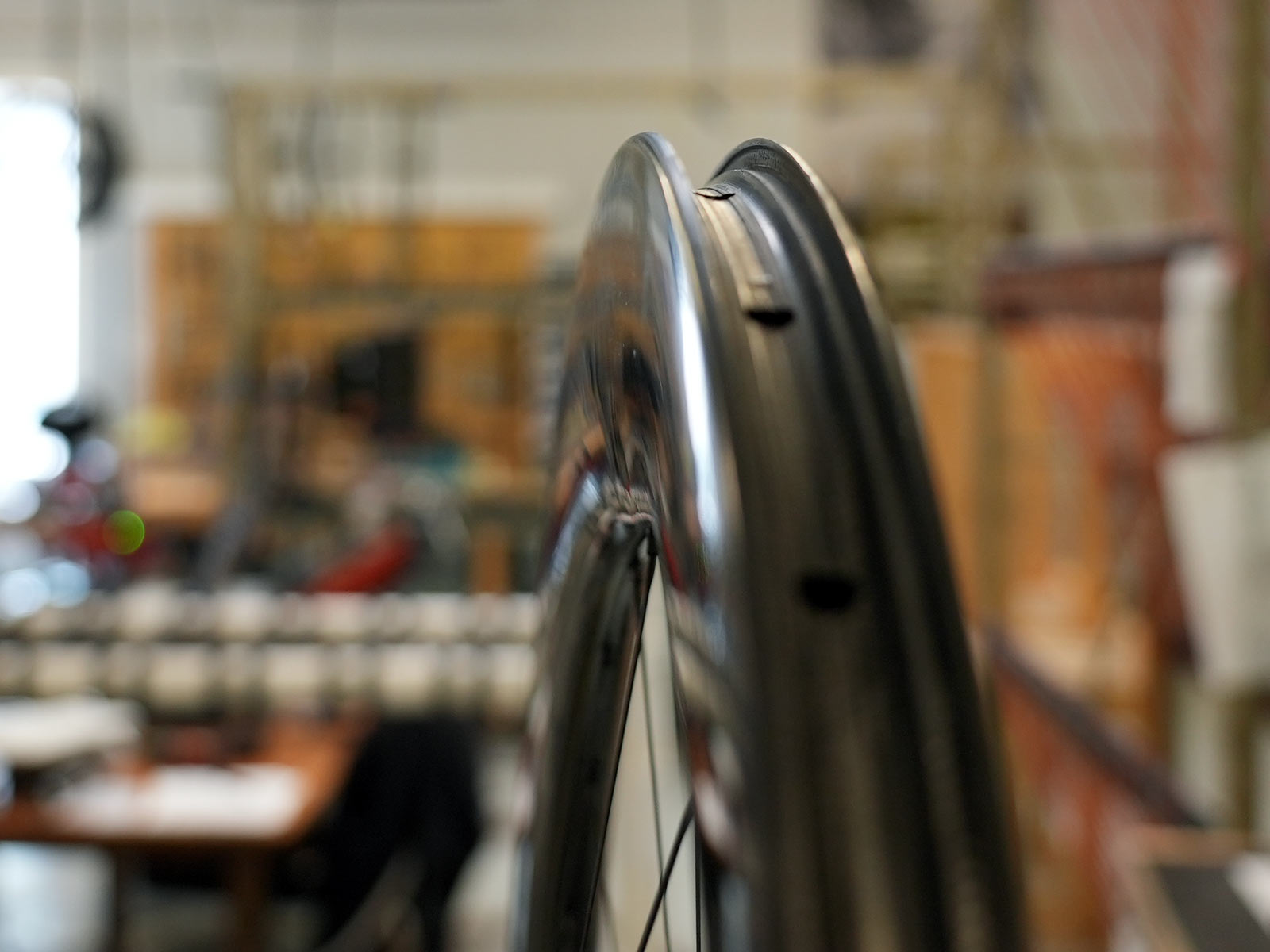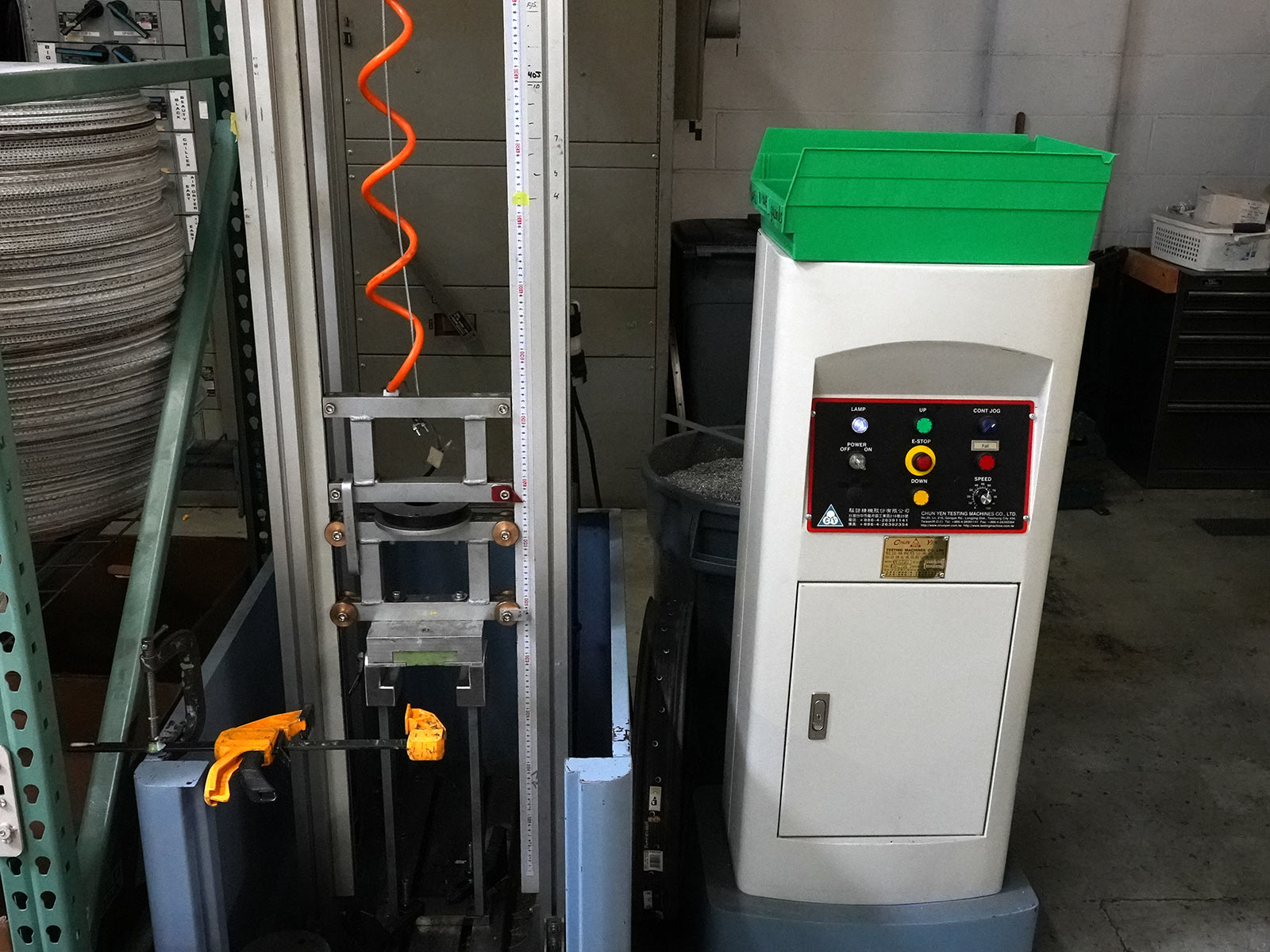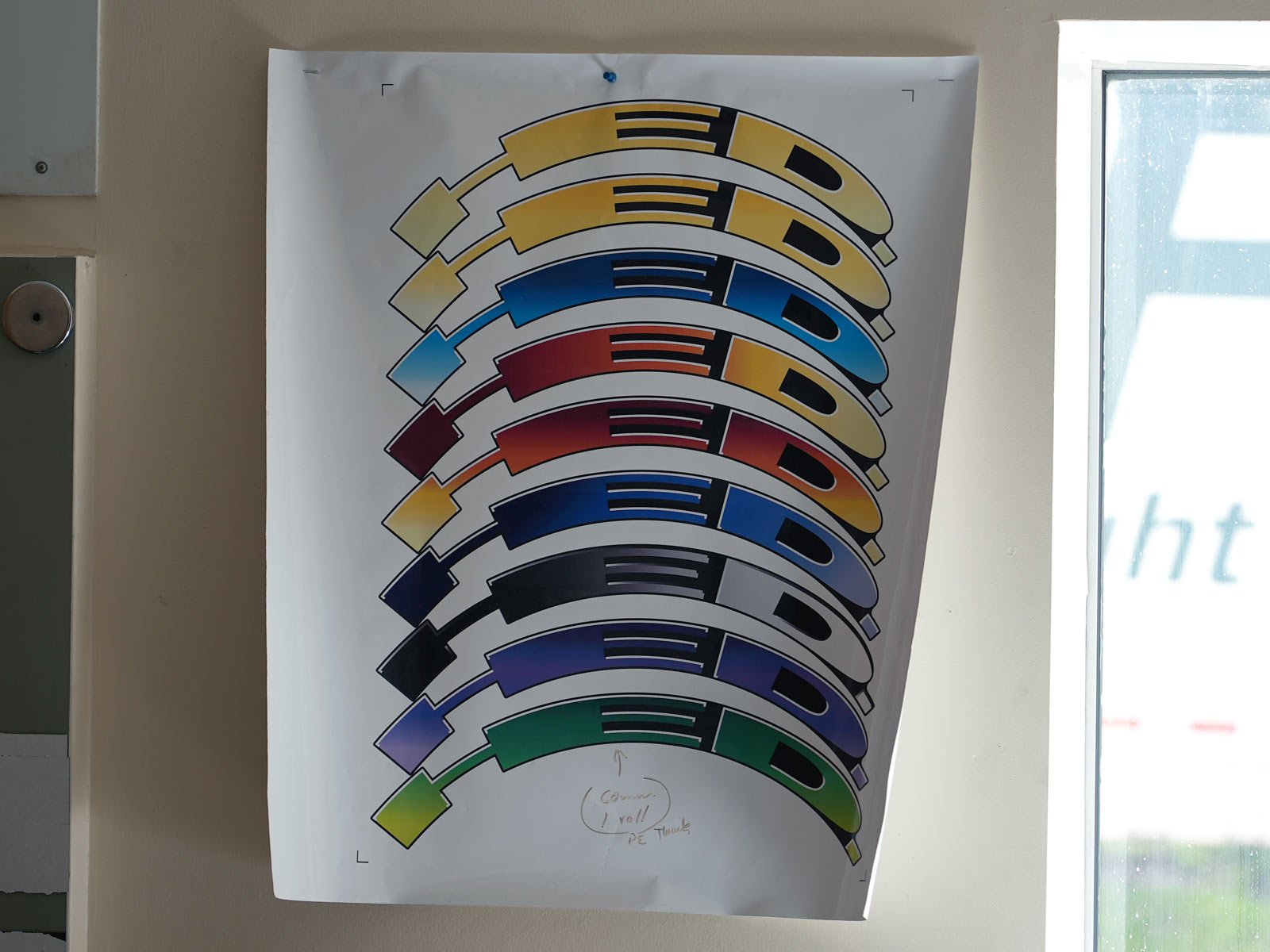Most of us know HED Cycling for their wheels. Late founder Steve Hed’s original designs pioneered the now-common rounded aerodynamic shapes many of us ride today. Their patents have been licensed, mimicked, or outright copied by many, and while there’s much more to their story that we’ll cover in an upcoming podcast episode, there’s also more than just wheels to see in their Minneapolis, MN, headquarters and factory.
Yep, all of HED’s carbon rims are made in Minnesota, and all of the carbon wheels are built here, too. Some of their hubs come from Onyx, also based in Minnesota, and they occasionally partner with Berd Spokes (also MN) for limited edition fat bike wheels. But the first thing you see upon entering is this coffee table made from the molds of the original Cervelo P5X…
Arguably the first mainstream triathlon “superbike”, the P5X was made in small batches by HED, utilizing their carbon fiber manufacturing expertise to create a one-piece beam frameset that was early to disc brakes.
Outfitted with HED wheels, naturally, it points toward the doors into the manufacturing and assembly areas hiding behind the offices.
HED makes a wide range of rims and wheels, from shallow to deep to full disc, and was one of the first brands to go wide to improve aerodynamics.
However, they were also one of the last to go full carbon, waiting for disc brakes to prove themselves before they were comfortable eliminating the alloy braking surface…it’s why their full-carbon Vanquish series is only offered in disc brake models.
HED’s carbon rim brake wheels always used a metal braking surface to better handle heat, with carbon fairings bonded to them to improve aerodynamics with minimal weight gain.
All of their rim-brake rims and wheels still use an alloy rim bed. The Jet and Ardennes Black Series wheels get a grooved brake track, shown above before being sent off for hard anodization to turn it all black. This surface treatment improves friction and stopping power, and it looks awesome.
And there’s still demand for rim-brake wheels, evidenced by rows of fairings lined up and ready to be bonded onto alloy rim beds.
The same technique is used for their full disc wheels, which use a carbon cover over a more traditionally spoked wheel, whether you choose rim or disc brake versions.
This shapely cover goes on the full carbon Vanquish Aero Disc wheelset, which actually creates negative drag figures at certain wind angles.
These rim molds are about as close a look at their process as co-founder Anne Hed would give us. They’re machined in-house, as are other parts of their tooling used to make the wheels. The layup, molding, and curing are done here, too.
The first HED wheel was a full disc rear wheel designed for triathletes and was made in the basement of the bike shop Steve worked in. One thing led to another and Anne started racing one and, well, magic happened between them.
Sadly, Steve passed away in 2014 and Anne has been running the company since. Her latest effort was a whirlwind production cycle to get that wild-looking 180mm deep aero wheel ready for Kona’s Ironman World Championships, and it didn’t disappoint. We’ll have that full story in our podcast!
This HAAS 1000ss 5-axis milling machine is their latest addition, fully modern sitting next to plenty of old-school machines still very much in use, too. (Amusingly, HAAS had a Black Friday sale on this…with further discounts if you purchased a Robot or Pallet Pool with it)
The Hurco VMX42 is a 3-axis machine that’s been in service here a bit longer.
Once the rims and fairings are molded, they’re QC’d, de-flashed, and then brought to this table for spoke holes to be drilled…for the Jet rims’ fairing, so these drilled holes have no impact on structural integrity. Each rim has its own station based on rim depth so that the angle is in line with the eventual spoke angle of the complete wheel.
Next, they go to their wheel building room.
Some wheels start off in a Holland wheel building machine, but all wheels get a manual check, de-tensioning, and truing before they leave the facility.
Finished wheels are given a final QC check and then staged for shipping.
The alloy wheels shown above are the base wheels for their full disc wheels. The wheels are built first, then the full carbon cover is bonded onto wheel after it’s complete. How do they true them? From the spoke heads inside the rim bed, so all you’d have to do is remove the rim tape, not destroy the wheel.
Once an order is received, the wheels are bagged, boxed, and shipped.
HED has a few machines in-house to test their wheels and rims. This rolling drum can simulate miles and miles of riding with a load on the wheel to check for any issues in the rim, hub, or complete wheel.
They can even bolt bumps on it to check how a wheel handles various height impacts…or just add stress to the test.
They also drop heavy things on the rims to test impact strength.
The lighter side of things comes from their graphics department. Over the years they’ve offered various colors, and can do custom decals for teams and sponsored athletes. Or artists:
This Prince tribute is fitting, the artist was also from Minneapolis.
Huge thanks to Anne for the tour and hospitality! You can check our review of their Vanquish road wheels and recent coverage of their road, gravel, and mountain bike wheels for more.
